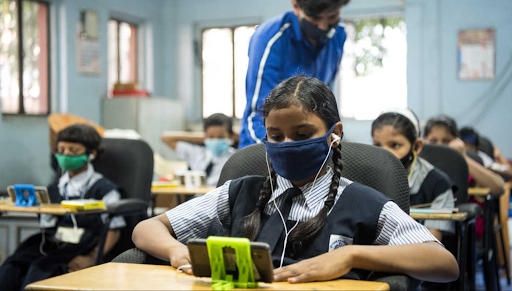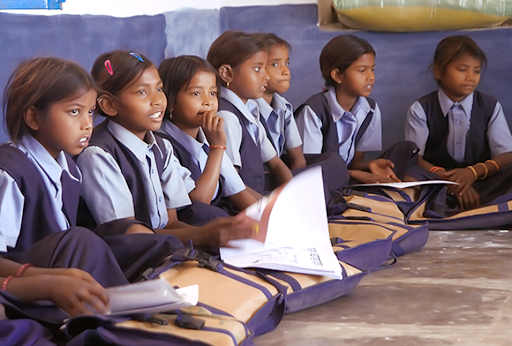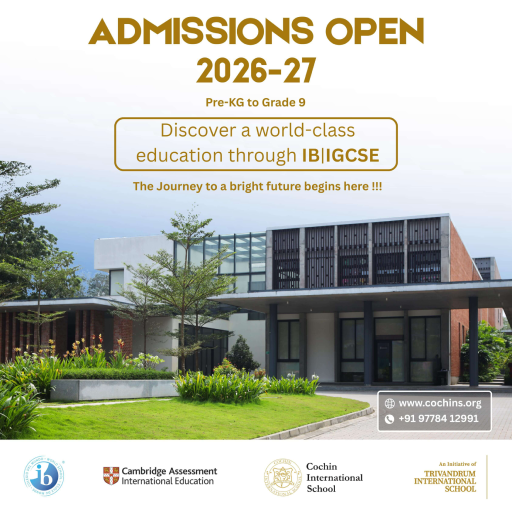
Solutions to the Most Common Challenges in the Indian Education System
Education in India: History, Problems & Solutions
The Indian education system has its own set of concerns and challenges that must be addressed in order to give better education to the kids. Although a lot has changed in the Indian education system over the past few years, there are still many flaws that need to be worked on. In this blog, we’ll go through the history of the Indian schooling system, as well as some of its flaws and solutions.
About Education in India

Source: https://assets.telegraphindia.com/telegraph/2021/Feb/1612374185_shutterstock_1893611278.jpg
A big change in the schooling system can be noticed from the pre-independence to the post-independence era in India. Kids were first educated in Gurukuls, which were eventually changed and replaced with the current schooling system.
After India’s freedom, its constitution set six essential rights, one of which was the Right to Education. According to this right, every kid from 6 and 14 years of age, was entitled to free schooling.
Pre-primary, primary, elementary, secondary, and higher secondary are the main levels of schooling in India. But there are many flaws and gaps in this system that are not addressed yet. Solutions to these issues might benefit the country’s overall growth and progress.
History of Education in India

Source: https://www.indica.today/wp-content/uploads/2020/09/education-india.jpg
India had the Gurukula system of schooling in ancient times when anybody who wanted to learn went to a teacher’s house and asked to be taught. If the guru accepts him as a disciple, he will live at the guru’s home and help in all of the guru’s activities. This not only strengthened the bond between both the student and the teacher but also trained the student on how to govern a household.
Starting from Sanskrit to the sacred books, and from mathematics to metaphysics, the guru taught whatever the student wished to know. The student was allowed to remain as long as they wanted or until the guru thought he had taught everything that he could. All teaching was linked with nature and living, rather than rote memorizing.
Thomas Babington Macaulay introduced the modern schooling system to India in the 1830s. Subjects like metaphysics and philosophy were thought to be useless, and the syllabus was limited to subjects like science and maths. The connection with nature and the close bond between the students and the teachers were lost. Teaching was limited to schools.
Changing Education System in India

Source: https://digitallearning.eletsonline.com/wp-content/uploads/2019/12/Why-School-education-crucial-for-child-development.jpg
Soon after India gained its freedom, the schooling system of the country saw another big change. The newly formed Republic of India had a long-held aim of giving free schooling to all kids aged 6 to 14. This can be seen from the fact that it is in Article 45 of the constitution as a directive policy.
But, more than 50 years later, this aim remains a long way off. The government apparently took notice of this gap in the recent past and has declared basic schooling to be a Fundamental Right of every Indian kid. Economic pressures and a major shortage of educated and skilled labour must have played a part in making the government take such action. In the past years, the Indian government has spent roughly 3% of its GDP on schooling, which is very low.
Issues in Indian Education System

Source: https://www.nanhikali.org/wp-content/uploads/2018/04/x6.jpg
Expenditure – More funds should be used for the improvement of India’s schooling system. Many positive steps are taken in this regard in the last few years. If this progress continues, India will soon be able to deal with its current problems.
Capacity Utilisation– The world requires innovative brains, and the authorities must support schools to help students maximize their potential. They should not allow the thoughts of the students to go unnoticed. The UN’s gross enrolment pattern must be adopted by India as well.
Infrastructure Facilities – Good infrastructure at government schools will help in increasing the quality of schooling. Since the government is working on digital schooling, it must take some work to make sure that the required facilities are available in all government schools.
PPP Model – Well-designed PPPs can help India’s school system build innovative models. As a result, the PPP model must be considered.
Student-Teacher Ratio – The number of students seeking good schooling is more than the number of good teachers. Thus, skilled teachers must be hired to teach the future generations of the country.
Students Studying Overseas – Due to the problems with the Indian schooling system, many kids opt to study abroad. Some work must be done on this aspect. And students must opt to stay and learn in India, to empower the country.
Solutions That May Help

- India is heading toward digital schooling, which requires innovation. This will help in developing the creative ideas of the students and the country’s youth. This will change the Indian schooling system. The government must encourage and support young brains to focus on complete growth rather than simply book learning.
- Schooling quality – There is a significant disparity in the level of education delivered in rural and urban sections of the country. Steps must be done to standardise education quality across India so that everyone has access to equal and impartial information and growth possibilities.
- Making schooling more accessible – There are many government schools and institutes that are reasonably priced yet lack facilities and quality. Private schools, on the other hand, charge more fees and provide better facilities and scope for the students. This gap must be noted, and the government must make sure that schooling is not expensive and accessible to all the students.
 (1).png)

